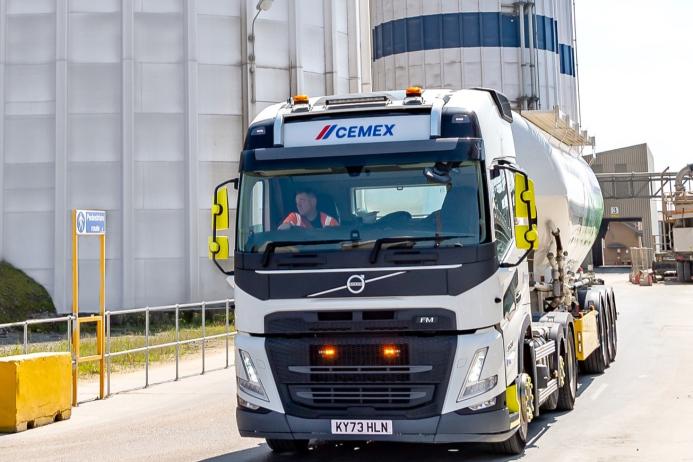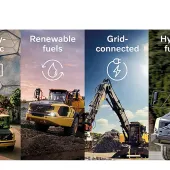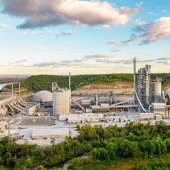EPD success for Cemex cement products across UK
Environmental Product Declarations published for cement delivered in bulk tankers from Rugby and Tilbury
CEMEX UK have published Environmental Product Declarations (EPDs) for products at their Rugby and Tilbury cement plants. The EPDs have been gained for cement delivered in bulk tankers, covering more than 80% of manufactured cements.
Paul Fletcher, head of sustainability for Cemex Europe, commented: ‘Achieving third-party verification through the International EPD System provides independent and transparent information of our cement’s environmental performance over the entire lifecycle of the product.
‘The EPD factors in all raw materials, energy inputs, and water usage throughout the manufacturing process and, therefore, provides us with a holistic validation of our products to support our net-zero ambitions.’
CEM II/A-L 52,5N (Cemstone) is a factory-produced Portland composite cement with the addition of limestone, containing around 80% clinker. It provides benefits in a wide range of concrete, mortar, render, screed and grout applications, being suitable for use as an alternative to Portland cement in most types of concrete.
CEM I 52,5N cement is a traditional Portland cement containing 95–100% clinker and is now being replaced by Cemstone across most customer segments due to the lower carbon intensity of Cemstone.
Both cements can be used to produce precast and pre-stressed concrete elements and can be used in ready-mixed concrete. Recent changes to BS8500, the complementary British Standard to the European EN206 concrete standard, now allow Cemstone to be used in combination with other additions to produce concrete suitable across a wide range of exposure classes.
Specifiers and concrete producers can, therefore, select and produce even lower-carbon concretes that support the industry’s drive to Net Zero by 2050.
Craig Williamson, cement commercial director for the UK, said: ‘This is another important step on our journey to produce more sustainable cement products for our customers and provide them with the confidence they need to ensure that they are able to meet their own sustainable building and construction ambitions.’
The CEM II A-L variety (Cemstone) sits within Cemex’s Vertua product portfolio, which includes building materials with attributes that demonstrate either a lower carbon embodiment, the use of recycled materials, improved thermal efficiency, increased water conservation, or design optimization.
The Vertua range produced by Cemex includes their CEM II A-L varieties of cement and ready-mixed concrete, and extends to products including sprayed concrete, dry-silo and bagged mortar, and asphalt.
Designing more sustainable products and solutions is a key pillar of Cemex’s global Future in Action programme alongside decarbonizing their operations, promoting a circular economy, and enhancing biodiversity – with the goal of becoming a net-zero business by 2050.
This news follows the announcement by Cemex at the end of 2023, that they had achieved EPDs for products produced in Croatia and Spain and were continuing to pursue EPDs for their products across their EMEA (Europe, Middle East, Africa and Asia) operations, which they have now achieved in both the UK and Poland.










